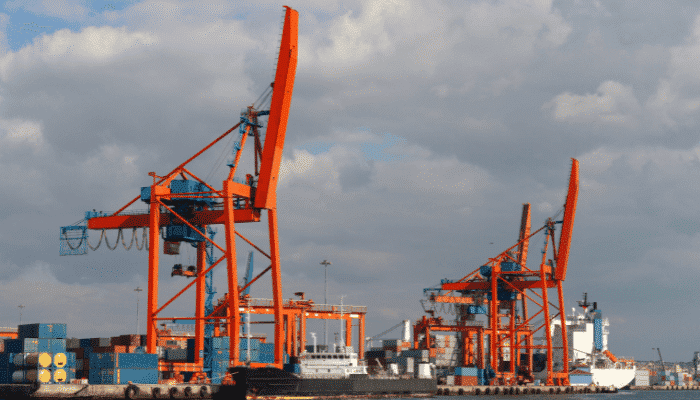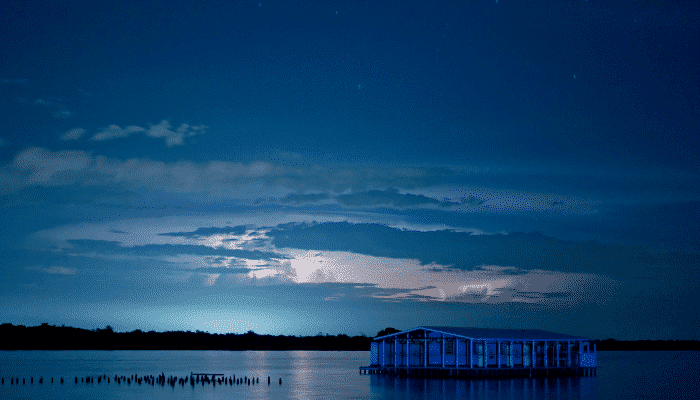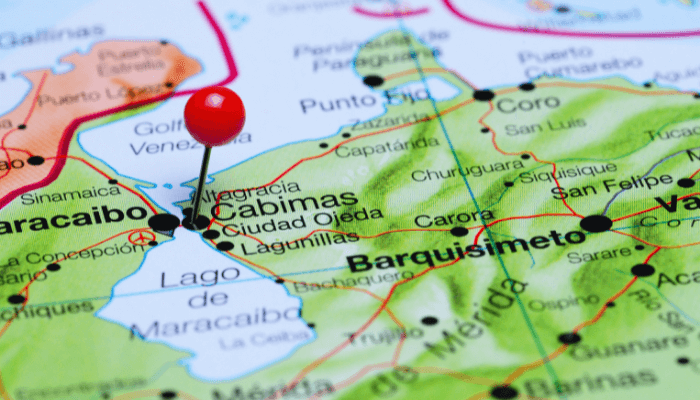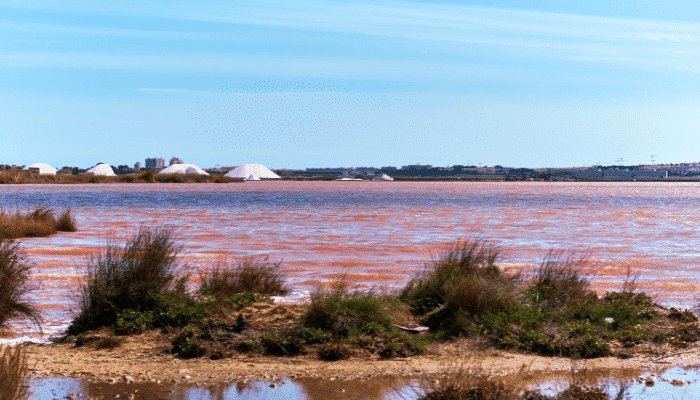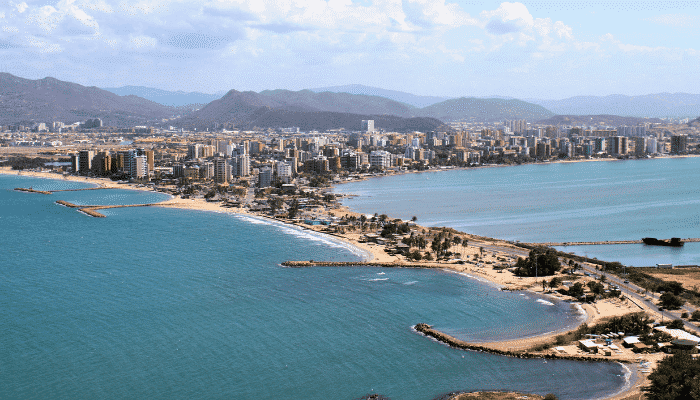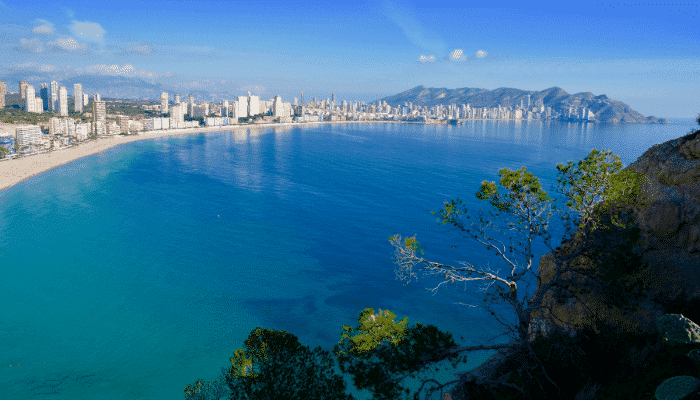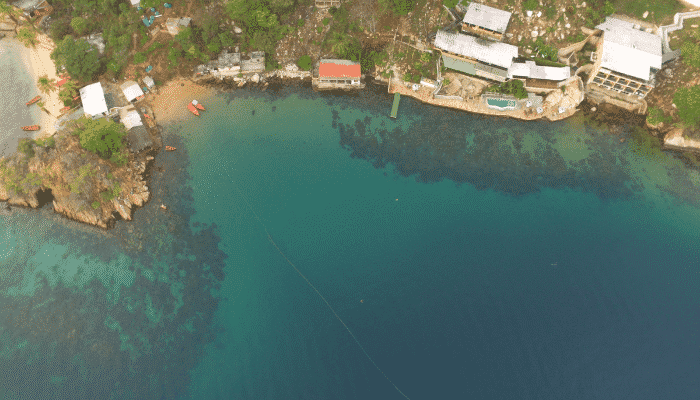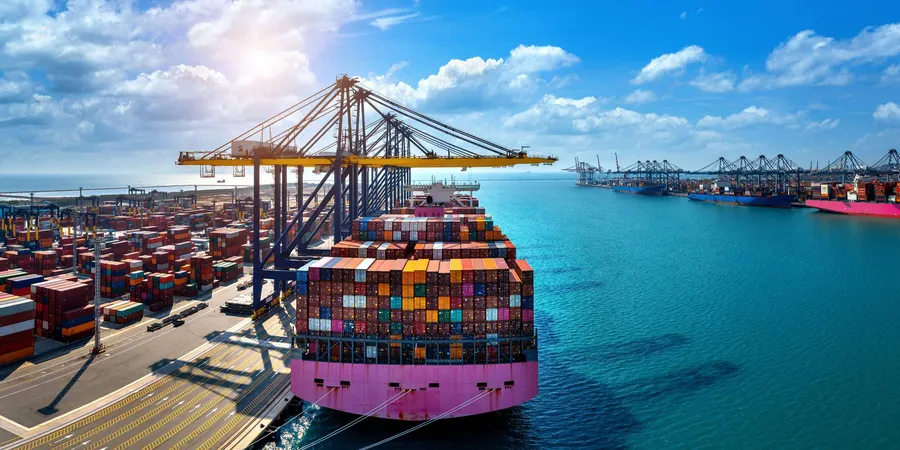10 Major Ports and Oil Terminals in Venezuela
Venezuela lies on the northern coastline of the South American continent, bordering the Atlantic Ocean and the Caribbean Sea. Its maritime sector is characterised by small and medium-sized ports exporting mainly petroleum and crude oil since the country is known to possess the largest oil reserves in the world.
A developing nation, Venezuela has a manufacturing sector concentrated in the Bolivar State, resting on the production of electronics, steel products, aluminium etc. The country has vast tracts of cultivable land growing cash crops like coffee and tea for export.
Venezuela suffers from financial debt and performs poorly in the Human development index. The public sector is riddled with corruption and most of its citizens live in poverty. As a result, crime rates are high and so is unemployment. These are some factors that have barred economic growth and infrastructural development.
Venezuela enjoys a favourable geographical position and has more than 20 ports however most of them require modernisation. Described below are the 10 major ports of Venezuela.
1. Port of Cabello
Cabello port is located on the northwestern coast of Venezuela, approximately 120 kilometres from the capital Caracas. It is the largest port in the country handling general cargo, containers, bulk and chemicals. Major exports include hardwood, cocoa, coffee, hides, asbestos fibre and sugar. The port receives shipments of machinery, copra and sesame seeds. Around 2400 vessels carrying 9,400,000 tonnes of cargo are handled at the port annually.
In the 17th century, the Dutch controlled the Cabello port which was also used by dutch smugglers for selling their goods. In the 18th century, the Spanish took over Cabello and transformed it into a fortified port town. They built wharves and warehouses for exporting agricultural goods produced in the Valencia basin. After the country attained independence, the port was refurbished to meet the growing needs of the national oil sector.
Vital for the Venezuelan oil industry, the port consists of two oil terminals located outside the main harbour. The Lagoven Oil Terminal and Puerto Borburata can accommodate ships with an LOA of 198 metres and a draught of 10.5 m.
The port is divided into four operational areas covering 184 hectares of land area. Area I contains 11 berths covering 1780 m with a water depth of 10 m for serving passenger vessels and ferries. The Port’s Area II has two wharves measuring 260 metres for handling general cargo vessels only. Container cargoes are handled in the third and fourth areas comprising 6 wharves, each measuring 190 metres.
Cabello port has 19 metal and 27 concrete silos for storing 25,000 tonnes of grains and cereals. The Eastern part of the port contains ten warehouses for storing up to 70,000 tonnes of cargo. The container freight station is equipped with automatic scanning systems and has 1200 reefer plugs. A 24-hectare yard is dedicated to storing containers.
2. Port of La Guaira
The second busiest port of Venezuela, La Guaira is just 21 nautical miles from the capital city. The port extends from Rio Uchire to Rio Maya and covers 88 hectares with a 4339 m long basin. It has 26 berthing facilities spanning 4200 m, lying amidst the Punta Maiquetia and Punta Santa Barbara. It can accommodate ships with a maximum draft of 12.5 metres.
The port handles containerised goods, general cargo and breakbulk. Two special wharves receive RORO vessels. La Guaira ships cocoa, coffee and animal hides and receives shipments of manufactured products and provisions. Approximately 800 vessels carrying 400,000 TEUs are handled annually.
La Guaira port was established in 1589 by a Spanish governor for exporting agro-based goods produced in Margarita, Cumana, Santo Domingo and the Caribbean. However, it was a rudimentary facility that was upgraded only in 1885 with the construction of two breakwaters, a 36-hectare basin, a 900 m boardwalk, three wharves and a lighthouse. The first commercial vessel from the La Guaira port left for Germany carrying 48,000 tonnes of coffee in 1899.
Presently, the port has 136,000 square metres of covered storage space and 12 vertical silos for storing 13,000 tonnes of grains.
3. Port of Maracaibo
Maracaibo is located in the Bay of Maracaibo on the western end of the main channel, 20 miles from the San Carlos Pilot Station. The natural well-protected harbour is the point of entry for ships arriving at the designated terminals situated on the western and eastern shores.
The second-largest city in Venezuela, Maracaibo is a financial centre with a strong economy due to the presence of rich petroleum reserves in the basin surrounding the Maracaibo lake.
The city has numerous oil refineries, food processing units and an established mining sector resting on coal extraction, sand, gravel and stone. Sufficient agricultural land is available for growing coffee, maize, cassava, cocoa and sugar. Livestock rearing offers additional income to the locals.
Maracaibo port spans 50 hectares of land area and has 12 wharves for dealing with general cargo, grains and construction material. However, only 8 berths work at their optimum capacity. It has a coal terminal with a floating storage transfer station called Bulk Wayuu, moored by chains in the La Calzada region. Around 800 ships carrying 1,330,000 tonnes of cargo and 8000 TEUs are handled at the port every year.
It has a 20,000 m2 storage yard and 24 silos for storing grains. Cold storage facilities are not available.
4. Port of Guanta
Situated in northeast Anzoategui in Venezuela, Guanta port is 5 nautical miles from Port La Cruz. The harbour lies in the Guanta Bay, does not experience swells and has calm waters. Guanta port covers 40.2 hectares and can accommodate ships with a maximum draft of 10.5 m. The access channel is 1200 m long and 148 m wide with a water depth of 25 m.
Breakbulk, general cargo, RORO, containers and coal are handled at the 6 commercial berths spanning 958 metres. Two wharves handle only small boats and offer repair and bunkering services. The rest are multipurpose berths that can also receive project cargo and pure-car carriers. Approximately 3,000,000 tonnes of cargo, 9940 TEUs and 650 vessels are handled at Guanta annually.
The port has ample storage space including 205,480 m2 of general cargo yards and 11,330 m2 of covered warehouse space. Around 12.8 hectares of land is available for keeping loose cargo.
Apart from serving the local industries, it also supports the regional fisheries sector. The western area has a 62,500 m2 fishing port with a 190 m long wharf and an adjoining patio filled with fishermen selling the fresh catch.
5. Port El Guamache
Lying in the Caribbean, on the extreme southern tip of the Margarita island, the El Gamache port welcomes general cargo vessels on its 170 m long wharf. It covers 15 hectares and has a container yard for keeping 5400 TEUs. The port has a container freight station with 124 reefer connections. It can accommodate ships with a maximum LOA of 260 m weighing not more than 80,000 DWT.
It is also a famous cruise port in the Caribbean having the main dock and two auxiliary docks, a tourist booth, three picturesque bays, white sand beaches and restaurants. Jet Skis, paddle boats and diving gear can be rented from the port. More than 150 stalls line the cruise port entrance, bustling with locals selling hand-painted pottery, shell jewellery, baskets and figurines. Tourists can also book an excursion to the Laguna de la Restinga, a national park surrounded by a large lagoon.
The nearest town is Porlamar which houses major attractions like La Punta Boulevard famous for its handmade high-quality cigars and traditional chocolate.
6. Port of Cabimas
The port of Cabimas is situated in the state of Zulia on the northeastern banks of Maracaibo lake. A major oil handling facility, it is connected to the Bolivar oil coastal fields, the biggest in South America. It has two jetties, five crude oil storage tanks and an intricate network of pipelines connecting the facility with the major Venezuelan cities.
Apart from the oil industry, Cabimas also has many plastic factories and scrap metal recycling plants. Fishing and cattle rearing are other economic activities. Major crops grown in the area include cassava, maize, sorghum and barley.
7. La Salina Terminal
Also known as the Lacustre terminal, La Salina is an oil terminal situated on the northeastern shore of the Maracaibo lake. Operated by Lagoven SA, it exports crude oil and liquified petroleum gas to the United States of America, Europe and Asia.
The port consists of two-finger piers and has four floating berths including an offshore loading pier lying 2 nautical miles from the rectangular-shaped island. This pier is exclusively used by LPG carriers and has submarine pipelines going all the way to the mainland. Some docks are leased to private companies such as Halliburton. On the opposite side of the terminal is the fishing dock reserved for small fishing boats. More than 100 vessels visit the port every year. It can accommodate ships with a maximum LOA of 280 metres.
8. Puerto La Cruz
The port lies in the state of Anzoategui, on the southeastern shores of Bahia de Pozuelos and incorporates the Guaraguao, El Chaure and the Los Cocos oil terminals. The former is one of the biggest oil terminals in Venezuela comprising six berths. Operated by PDVSA Petroleo and Gas SA, the terminals receive oil tankers weighing up to 120,000 DWT with a draught of 16.7 metres.
9. Port of Ciudad Bolívar
Earlier known as Angostura, Ciudad Bolívar is the capital of Bolivar, a southeastern state of Venezuela. Ciudad Bolivar port lies on the southern banks of the river Orinoco. It is the main port and a distribution hub for the inland areas and regions lying in the river basin.
The port has five wharves covering 730 m with a depth of 9 metres. It handles exports of cattle, animal hides, gold, and fruits and receives shipments of construction equipment, raw material, metal products and foodstuffs. The port was designed to accommodate river barges and small cargo ships.
10. Port of Sucre
The Sucre port serves the city of Cumana, the capital of the Sucre State. It lies at the mouth of Manzanares river before it flows into the Caribbean Sea. Cumana is a manufacturing and commercial centre in an agricultural area that grows coffee, sugarcane, tobacco, beans, cacao and fruits like bananas. The city is also known for its
sardine-canning industry
Sucre port has a finger pier with one berth allowing two vessels to dock simultaneously on either side. The northern berth is 150 metres long and is connected to an access road. Logistics related services are also provided at Sucre which houses a small terminal building. It is managed by Duarte Vivas and Asociados, CA, a trading enterprise based in Caracas, Venezuela.
Storage spaces include four warehouses covering 3000 m2 and a 7000 m2 open storage area. Agro-based products comprise the majority of exports followed by consumer goods. It does not handle liquid cargo but is used by some oil companies for unloading equipment required by inland oil fields and refineries.
The port has a beautiful waterfront and one can see the Castillo de San Antonio de la Eminencia, the old Spanish port from the port harbour.
Source: Marine Insight


